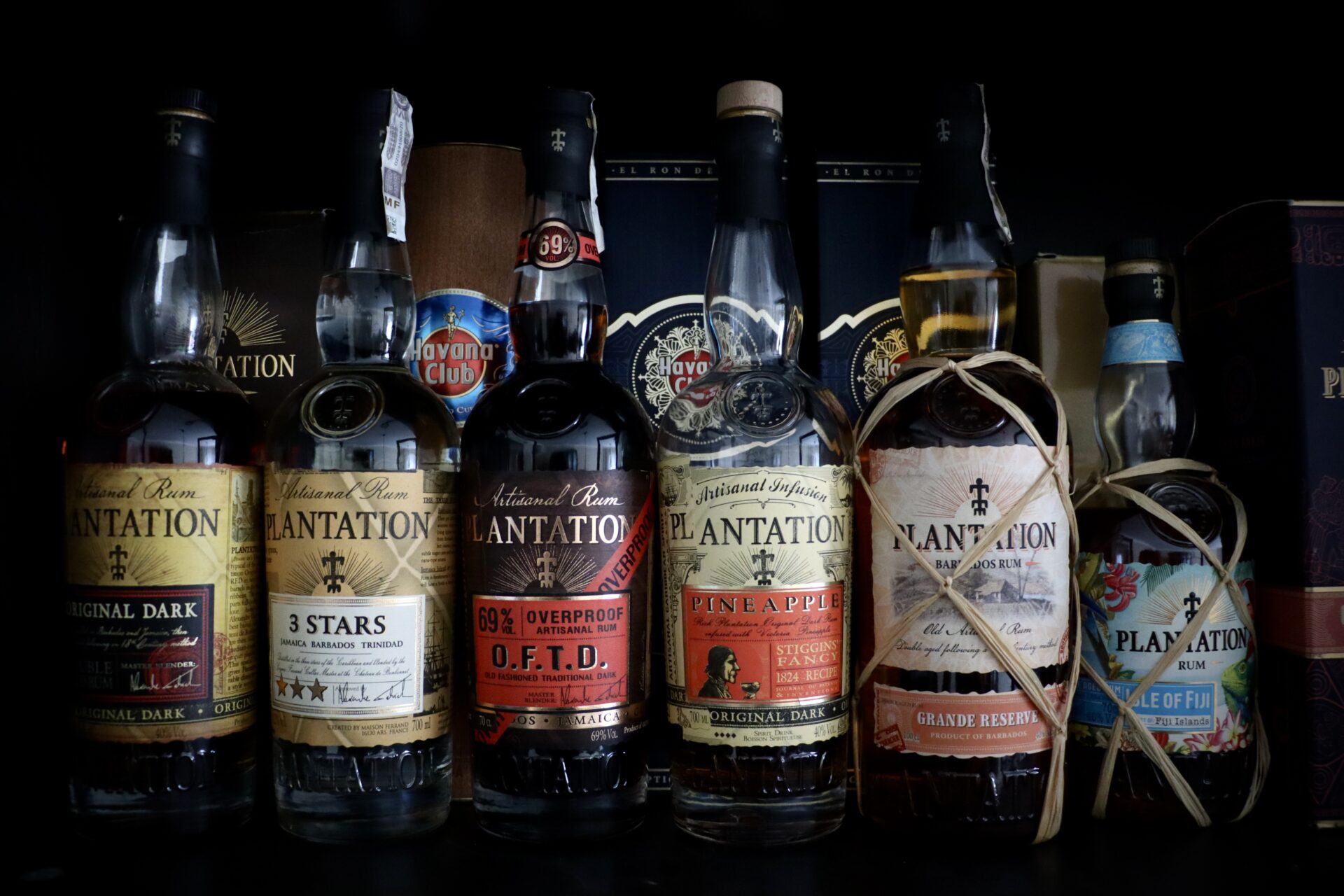Classification of Rums
Rum is arguably one of the most challenging alcoholic beverages to classify. The primary reason for this complexity is the lack of universal regulations governing its production. While there are regional regulations in place, the widespread production of rum across various geographical locations, the absence of an international consortium, and variations in production methods have a significant impact on how rum is categorized. To be labeled as rum, a distilled beverage must typically be made solely from sugarcane juice and its by-products.
One of the most common and straightforward methods of categorizing rum is by its color:
1 – Classification by Color
- White rum – Unaged or lightly aged.
- Gold Rum – Moderately aged, with a golden hue.
- Dark Rum – Aged, with a darker, richer color
However, there are significant nuances within this classification. Some white rums, for instance, are aged initially to enhance flavor profiles but are then filtered to remove color. Consequently, they are still classified as white rum despite potentially meeting the criteria for gold rum.
Additionally, post-production additives, including colorings and flavorings, can be introduced to rums, causing a white rum to appear dark. This regulatory ambiguity can make color-based classification misleading.
2 – Traditional Method
Another approach to classifying rum is based on the colonies or regions where it is produced. Initially, this method made sense because rum produced in these regions often shared similar characteristics due to the consistent production techniques. However, as time passed, different production methods in the same regions led to a loss of accuracy in this classification.
British Colonies (e.g., Jamaica, Barbados, Guyana) – Rum is typically made from molasses, distilled in pot stills, resulting in bold, richly flavored rums.
Spanish Colonies (e.g., Puerto Rico, Cuba, Dominican Republic) – Molasses is used as the base material, and column stills are employed, resulting in lighter, cleaner, and smoother rums.
French Colonies (e.g., Martinique, Haiti, Guadeloupe) – These rums are sugar cane juice-based, offering grassy and vegetal flavors, known as “rhum agricole.”
However, even this classification method has limitations today, as regions may produce diverse rum styles that do not fit neatly into these categories.
3 – Three Key Factors
While not a strict classification, evaluating rum based on three key factors can provide a more comprehensive understanding:
- Base Ingredient: Is it molasses-based or sugar cane juice-based?
- Age: Is it aged or unaged? Aging can result in a richer and smoother taste.
- Distillation Method: Does it use traditional copper pot stills or column stills? Each imparts distinct characteristics.
- Traditional copper pot still – yields sturdier, deeper, richer flavors.
- Column still – produces lighter, purer flavors.
- Blend – blend of rums produced using two stills.
Spiced rum is another category worth mentioning. It involves adding various spices and aromatic herbs to the base rum. The choice of spices can vary but often includes cinnamon, cloves, nutmeg, allspice, and vanilla. This spiced infusion makes these rums suitable for cocktails and contributes to their unique flavor profiles. Spiced rum likely emerged as a way to improve the taste of lower-quality rums with the addition of spices.
Some rums, notably those from Jamaica, are known for their high ester content. Ester compounds are organic components formed during fermentation when yeast interacts with sugar in the mash, contributing to distinct flavors and aromas. Most rums typically contain ester levels between 50 to 500 ppm (parts per million).
The high ester content in Jamaican rums results from extended fermentation with wild yeast strains, specific yeast types, and the distillation process. These rums are renowned for their intense and complex flavor profiles, featuring tropical fruit, banana, pineapple, and even funk notes.
In summary, rum classification is a complex endeavor due to various factors, including production methods, additives, and regional variations. Understanding the base ingredients, aging, and distillation methods can provide a more nuanced perspective on rum categorization.
The best rum is the one that is as black as tar.
Captain J. Flint

